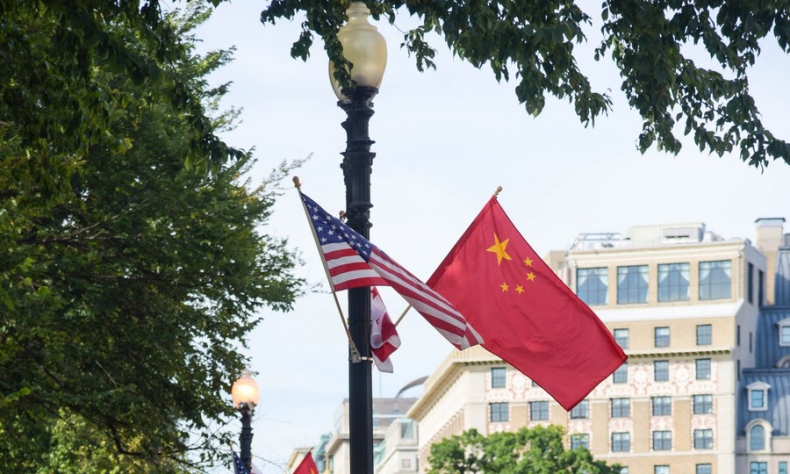The Future of the Sino-US Relationship

Scapegoating China is a risky strategy for President Trump in converting undecided voters.
Historically, August can be a cruel month as evidenced by the outbreak of World War One in 1914 and the Russian military operation in Georgia in 2008. Unsurprisingly, international concerns over the increasingly febrile atmosphere of August 2020 could be attributed to the continuing spread of the coronavirus. The scale and duration of Covid-19 economic and political instability across the world is unknowable and unquantifiable.
However, these fears and concerns are intensified by the escalating, dangerous tensions between the United States and China, the subject of this essay.
The alarming age of the negative sum
Trump’s unilateralist, transactional approach toward international engagement since 2017 has been characterised by the win-lose outcomes of a noncooperative zero-sum game. In 2020, this has become increasingly a mutually harmful negative sum game between the US and China.
However, President Trump applies his “America First” doctrine in a similarly aggressive and critical manner to some of his NATO Allies (Germany and Canada being conspicuous cases) evidenced by his scolding of the deficiencies of NATO European defence spending and “unfair” EU trade competition.
Principally, the human and economic cost of the pandemic and the mounting evidence of his declining popularity, trailing the Democratic presidential candidate Joe Biden in the polls, has activated President Trump, Republican members of Congress and China foreign policy hawks’ in increasingly strident opposition to China.
The deteriorating Sino-US relationship
At the beginning of 2020, the signing of a Phase One trade agreement and optimistic mood music engendered by President Trump’s praise for President Xi Jinping in the handling of the Coronavirus outbreak in Wuhan, augured well for constructive relations.
However, after the first reported US case of a China-travel related infection at the end of February, the widening disparity between the US and China in both total cases and the case fatality rate has fuelled the Trump Administration antagonism and suspicions toward China.
As of August 21, the United States had recorded 5.57 million infections (25 percent of the world total) with more than 174,283 deaths (23 percent of the global total By contrast, China’s recorded 89,567 cases with 4,709 deaths are strikingly smaller, greatly emphasised by difference in populations (China 1,400.5 million and the USA 331.2 million).
This escalation of tensions builds on the predictable areas of allegations directed toward China previously during the Trump Presidency: Taiwan issue and the One China principle; maritime security, freedom of navigation and the South China Sea; and the bilateral trade relationship and punitive tariffs imposed by the United States and reciprocated by China.
Additional tensions have arisen over human rights and the National Security Law in Hong Kong at the end of June.
US allegations on these developments (with sanctions imposed on officials of the Chinese central government and Hong Kong SAR government) have led to China’s strong rebuff as an unwarranted interference of China’s internal affairs, and accusations of hypocrisy citing violation of human rights in the context of the Black Lives Matter protests at the end of May and June, and also the infringement of the rights of Native (Indigenous) Americans.
The election-driven rhetoric from Trump and the White House toward China has become increasingly belligerent and condemnatory. A recent speech from Secretary of State Pompeo in California criticised a new “Iron Curtain” shaped by the technological and artificial ascendancy of China.
The large economic contraction and growing unemployment in the US have been accompanied by assaults on Huawei and its 5G capabilities. These attacks, purportedly to protect US National Security, have been reinforced by new Executive Orders directed against TikTok and WeChat, undermining communication and video sharing between Chinese and US citizens, particularly the Gen Z generation born after 1997.

The immutable logic of the economic and financial symbiosis
The June 2020 Chinese trade surplus with the USA of $28.40 billion exceeded that of January ($26.06 billion), the last non-Covid affected month. The political consequences of such a trade surplus remain acrimonious but China’s purchase of US Treasury Bills (over $1 trillion and 4 percent of US National Debt) funds the US trade deficit while increasing the value of the dollar against the Renminbi, strengthening Chinese export competitiveness.
Earlier in March there were concerns that China was selling US debt as a retaliatory measure but the scale of this has not disconcerted the markets given the more than $4 trillion budget deficit anticipated in 2020.
The US Presidential election outcome
The highly controversial Electoral College victory of Donald Trump against Hilary Clinton in November 2016 (despite her 4 million majority in the popular vote) will caution China’s leadership in projecting the outcome and consequences of the November 2020 election.
On the one hand, it could be argued that a second term Trump Presidency might ease tensions while the coronavirus pandemic continues to rage. The currently confrontational trade, technology and security policies might be ameliorated but there could be growing tensions in the White House among Trump and his more hawkish Cabinet members. The composition of Congress will be crucial.
On the other hand, a victory for the Democratic nominee Biden would introduce new opportunities and uncertainties in the China and US relationship.
Separating rhetoric from reality (2021-2024)
In 2021, where will US and China strategic interests coincide and divide? In the continuing Covid-19 crisis, what will be the shape of global security cooperation? Will NATO forge a peaceful cooperative partnership with China in the Asian-Pacific and elsewhere?
Scapegoating China is a risky strategy for President Trump in converting undecided voters. The majority of American voters viewing the past four years are unlikely to accept China concerns as a reason to deliver a second term for Trump.
Adrian Kendry is former Senior Defence Economist and Adviser to the Secretary General, NATO (2001-2014) and Lead for Economic Security, NATO Strategic Foresight Analysis Programme (2014-2020). He is also Visiting Professor of Economics, Security and Peacebuilding at the University of Winchester.
The article reflects the author’s opinions, and not necessarily the views of China Focus.
 Facebook
Facebook
 Twitter
Twitter
 Linkedin
Linkedin
 Google +
Google +



